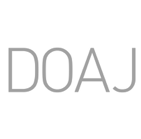International Journal of Preventive Medicine Q2 Unclaimed
International Journal of Preventive Medicine is a journal indexed in SJR in Public Health, Environmental and Occupational Health with an H index of 60. It is an CC BY-NC-SA Journal with a Double blind peer review review system, and It has a price of 84,5 €. The scope of the journal is focused on public health, health promotion, rehabilitation, disease prevention. It has an SJR impact factor of 0,607 and it has a best quartile of Q2. It is published in English. It has an SJR impact factor of 0,607.
Type: Journal
Type of Copyright: CC BY-NC-SA
Languages: English
Open Access Policy: Open Access
Type of publications:
Publication frecuency: -
84,5 €
Inmediate OANPD
Embargoed OA- €
Non OAMetrics
0,607
SJR Impact factor60
H Index72
Total Docs (Last Year)354
Total Docs (3 years)2696
Total Refs660
Total Cites (3 years)280
Citable Docs (3 years)1.35
Cites/Doc (2 years)37.44
Ref/DocOther journals with similar parameters
International Journal of Environmental Research and Public Health Q2
Health systems and reform Q2
Revista de Saude Publica Q2
Critical Public Health Q2
Injury Prevention Q2
Compare this journals
Aims and Scope
Best articles by citations
The growing global problem of vaccine hesitancy: Time to take action
View moreHow to find lessons from the public health literature: Example of a scoping study protocol on the neighborhood environment
View moreAssessment of health consequences of steel industry welders' occupational exposure to ultraviolet radiation
View moreVitamins A and E deficiencies among pregnant women attending antenatal care at general hospital Dawakin Kudu, North-West Nigeria
View moreSelf-reported factors associated with engagement in moderate to vigorous physical activity among elderly people: A population-based study
View moreAdolescent perception on school environment and smoking behavior: Analysis of Isfahan tobacco use prevention program
View moreA comparison of the effect of nasal bi-level positive airway pressure and sigh-positive airway pressure on the treatment of the preterm newborns weighing less than 1500 g affiliated with respiratory distress syndrome
View moreRole of heart and its diseases in the etiology of depression according to Avicenna's point of view and its comparison with views of classic medicine
View moreAwareness of the necessity of regular eye examinations among diabetics: The yazd eye study
View morePotential effects of pomegranate on lipid peroxidation and pro-inflammatory changes in daunorubicin-induced cardiotoxicity in rats
View moreSmoking pattern and associated sociodemographic factors: Findings from a nationwide STEPS survey in Iran
View moreTrends in scientific literature on addiction to the internet, video games, and cell phones from 2006 to 2010
View moreComment on: Effect of pomegranate flower extract on cisplatin-induced nephrotoxicity in male rats
View morePreliminary investigation of a novel mouthguard
View moreComment on: Pomegranate flower extract does not prevent cisplatin-induced nephrotoxicity in female rats
View moreAssessment of different quit smoking methods selected by patients in tobacco cessation centers in Iran
View moreComment on: Prevention of renal damage by treating hyperuricemia
View moreAdministration oflactobacillus caseiandbifidobacterium bifidumameliorated hyperglycemia, dyslipidemia, and oxidative stress in diabetic rats
View moreQuit smoking experts' opinions toward quality and results of quit smoking methods provided in tobacco cessation services centers in Iran
View moreSelf-reported practices and attitudes of community health workers (accredited social health activist) in tobacco control - Findings from two states in India
View morePsychological, social, and familial problems of people living with HIV/AIDS in Iran: A qualitative study
View moreWorld health organization advocates for expansion in the role of health workforce to prevent unsafe abortions
View moreThe relationships between environmental factors and violent behaviors in adolescent students of Isfahan, Iran
View moreDriving behavior among different groups of Iranian drivers based on driver coping styles
View more



Comments